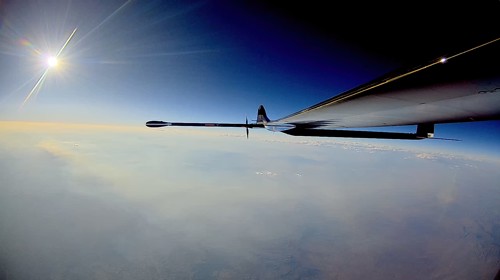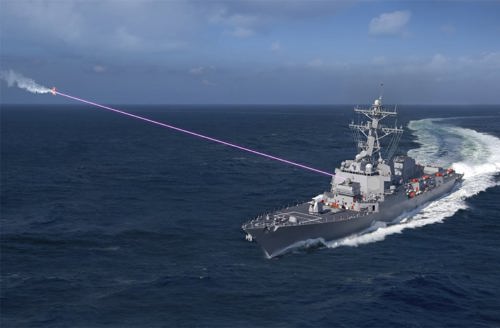Over the past year and a half, the defence world has had to confront a number of seismic changes from Russia’s invasion of Ukraine to Germany and Japan unveiling new defence policies, as well as growing tensions in Asia between the US and China.
Consequently, countries are reassessing their defence commitments and in many cases looking to increase budgets.
While traditional defence capabilities continue to absorb most of the investment being made, restocking supplies that have been sent to Ukraine for example, many new technologies are now emerging and becoming a priority while supply chain resilience and initiatives to invest in domestic defence industry supply chains are also becoming more important.
NATO’s 2022 Strategic Concept, which was updated at The Madrid Summit this June, made the point that the West is no longer solely confronted by conventional forms of warfare but that it has now spilled over into the space and cyberspace fields. In fact, there is now a large and growing ‘grey zone’, short of actual war, that’s filled with state, non-state and malign actors.
The biggest trend around the world has been the need to effectively integrate forces and capabilities, both at national level but also between allies and partners, and this requires a change in culture, improved training and, crucially, the use of data ensuring commanders have a full range of capabilities that can work together seamlessly at all levels.
Emerging technologies
Emerging and disruptive technologies (EDT) are having a profound impact on security enabling militaries to become more effective, resilient, cost-efficient and sustainable.
NATO’s 2022 Strategic Concept affirms that EDTs bring both opportunities and risks while altering the character of conflict. These technologies are acquiring greater strategic importance and becoming key points of global competition and NATO is looking to promote innovation and increase investments in EDTs to retain its interoperability and military edge.
For NATO there are nine priority technology areas:
- artificial intelligence (AI)
- autonomy
- quantum
- biotechnologies and human enhancement
- hypersonic systems
- space
- novel materials and manufacturing
- energy and propulsion
- next-generation communications networks
Data is a key enabler for all EDTs and NATO has also developed an Implementation Strategy to support digital transformation.
It has also put in place a Data and Artificial Intelligence Review Board and an Autonomy Implementation Plan. Both set out operational principles and how NATO should look to develop and use these technologies.
DIANA
NATO directly engages with innovator communities on the ground and has developed initiatives and bodies to encourage greater innovation in EDTs.
One of these bodies is the Defence Innovation Accelerator for the North Atlantic (DIANA). First established in 2021 it is intended to foster transatlantic cooperation on critical technologies, promote interoperability and harness civilian innovation by engaging with academia and the private sector.
DIANA works directly with leading researchers and entrepreneurs, from early-stage start-ups to more mature companies, and runs competitive industry challenges which are based on a critical defence and security problem. Innovators are asked to develop deep tech, dual-use technologies to tackle them.
Innovators that are selected into DIANA’s programmes receive non-dilutive grants (i.e., investment capital that does not require them to give up equity or ownership in their company), and they gain access to over 10 accelerator sites and more than 90 test centres across the Alliance. They also have access to a network of mentors (scientists, engineers, industry experts, end-users and government procurement experts) and a community of trusted investors.
DIANA launched its first three pilot challenge programmes in 2023 and its aim is to have the capacity to work with hundreds of innovators each year across an even wider network of accelerator sites and test centres throughout the Alliance.
NATO has also established a NATO Innovation Fund to provide strategic investments in start-ups developing dual-use emerging and disruptive technologies in areas that are critical to Allied security. The Fund is set to be the world’s first multi-sovereign venture capital fund and will focus on early-stage investments, providing risk capital directly into these start-ups, while also having the ability to invest in other top-tier deep-tech venture capital funds.
Key trends
Across the defence landscape new technologies are emerging, among them: space technology; artificial intelligence; autonomous systems; energy weapons, and hypersonic and missile technology.
Space is one of NATO’s key priority areas, with the US and the European Space Agency taking the lead.
Here in the UK British engineers successfully completed a stratospheric flight trial of BAE Systems’ High Altitude Pseudo Satellite (HAPS) Uncrewed Aerial System (UAS) - PHASA-35 – earlier this year.

Operating at over 66,000 feet, the PHASA-35 trial allowed engineers to assess the performance of the experimental solar-electric drone operating at the very edge of the earth’s atmosphere.
Designed by BAE Systems’ subsidiary Prismatic it’s intended to provide a persistent and stable platform for various uses including ultra-long endurance intelligence, surveillance and reconnaissance, as well as security but it also has the potential to be used in the delivery of communications networks including 4G and 5G and could be used in a wide range of applications, as an alternative to traditional airborne and satellite systems.
PHASA-35, which has a 35-metre wingspan and carries a 15kg payload, uses a range of technologies including advanced composites, energy management, solar electric cells and photo-voltaic arrays to provide energy during the day which is stored in rechargeable cells to maintain flight overnight.
Commenting on the successful trial, Dave Corfield, CEO of Prismatic said, “This is a fantastic achievement for everyone involved and shows the commitment of BAE Systems to invest in new technologies and markets. PHASA-35’s first stratospheric flight demonstrates that this vehicle is on track to become the go-to system for long endurance, high altitude and communications applications in the future.”
Interestingly, the PHASA-35 programme sits within FalconWorks, a new centre for advanced and agile research and development within BAE Systems’ Air sector that’s focused on generating ideas, innovation and collaboration, whether that’s working with new or existing partners, academia, research organisations, SMEs and national governments.
Specialists at FalconWorks look to assess emerging trends and deliver solutions and increasing the use of digital technologies such as artificial intelligence, quantum sensing and robotics.
Another area of interest is direct energy weapons. Considerable research and development is taking place and analysis suggest that as a sector it could be worth over $17bn by 2029.
Directed energy weapons work by converting chemical or electrical energy into radiated energy and focusing it on a target, resulting in physical damage or disruption. Lasers, for example, use light energy to heat up or burn the target, while microwaves use electromagnetic waves to interfere with electronic systems, and particle beams use accelerated subatomic particles to penetrate and damage a target.
Different firing demonstrations have been conducted throughout the last decade, but in the past two years developments have accelerated and are likely to be boosted further by the construction of advanced ships on which these weapons are expected to be deployed.

The US, Germany and UK have all tested directed energy weapons systems at sea and have reported considerable success. Directed energy weapons can respond more quickly, precisely, and discreetly to different threats and don’t require ammunition, which reduces the logistical and operational costs.
Artificial Intelligence is another area of interest, and the adoption of AI systems is expected to increase significantly amongst global militaries. It can be used to detect incoming weapons far faster than human operators or provide real-time battlefield recommendations based upon large quantities of data.
The US is investing in trusted AI systems to enhance its capabilities and is planning a major expansion in AI use and adoption as is NATO, which has called AI technology an ‘emerging and disruptive technology,’ that carries both risks and opportunities for members.
US defence giant RTX has recently demonstrated advanced AI-enabled communications systems that are capable of rapidly distributing data during the US Indo-Pacific Command's Northern Edge 2023 exercise series in Okinawa, Japan.
Collins Aerospace, an RTX business, used advanced AI-enabled communications, and intelligent gateway technology, to connect partners from The Five Eyes alliance and others to a data network, expanding joint force capabilities.
"This was a critical demonstration to prove our solutions can facilitate and enable connectivity for a large and growing joint force network," said Elaine Bitonti, vice president, Connected Battlespace & Emerging Capabilities for Collins Aerospace. "It's important to understand that the joint fires data our systems processed and distributed came from a large network of platforms that weren't originally designed to connect and share data like this. Not only did our gateway and cross domain solution connect those platforms they also automated the distribution of that data to the right partner at the right security level."
The AI also accelerated decision-making timelines, with AI-enabled machine-to-machine communications able to deliver threat awareness data from the US Space Force's Unified Data Library to multiple aircraft, demonstrating how they can be used as connectivity nodes on the battlefield.
AI is seen as fundamentally changing the character of warfare, whether supporting intelligent and autonomous unmanned systems or through AI-enabled data analysis, information processing and intelligence analysis delivering enhanced command information.
As a result, governments are spending vast sums on exploiting advances in AI. In the US, for example, work has been undertaken on the concept of Motherships of drones that can release smaller drones from the air and the sea, while troops are employing exoskeletons and wearable electronics loaded up with combat apps.
In the UK, AI-enabled autonomous combat vehicles and resupply systems to deliver supplies without putting people in danger are being developed as are smart systems capable of guiding and advising soldiers in the field, based on data gathered from small drones collecting video footage from the front line.
Other developments
Additive manufacturing is another area in which investment and innovation is taking place and last year the US commissioned the largest metal AM printer in the world with the aim of being able to repair or produce parts on the move, whether at sea or closer to a land-based front line. Europe and Japan have also invested significant amounts in additive manufacturing and BAE Systems has declared its intention for 30% of Tempest 6th Generation fighter programme parts to be created in their AM smart factories.
5G - the next generation of faster mobile wireless connectivity - will be entering service globally over the next few years and is likely to have a significant impact on the battlefield of tomorrow which as we’ve already discussed will be data-heavy and more connected than ever. That will then have an impact on unmanned systems – the use of drones in the Ukraine war has demonstrated the importance of this technology on the modern battlefield – and the global military drone market is projected to be worth in excess of $30 billion by 2029.
Next month sees the defence industry gather at DSEI in London.
Whatever your views it’s an exhibition that has successfully connected the global military community with some of the most advanced and cutting-edge technologies.
In a world in which we are seeing the largest conventional war in Europe in almost 80 years and where global rivalries are intensifying, investing in our defences is sadly more important than ever.













